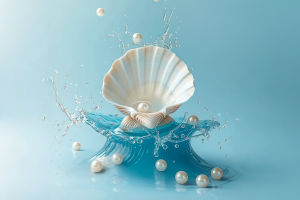We often hear people use the words "gemstone" and "crystal" like they mean the same thing—something shiny, sparkly, and beautiful.
But the truth is, they're not exactly the same.
Whether we're looking at their scientific structure, cultural meaning, or market value, gemstones and crystals have some big differences. Let's break it all down together.
What Is a Crystal?
A crystal is a solid material where the atoms, ions, or molecules are arranged in a neat, repeating 3D pattern. This special structure gives crystals their unique shapes and optical effects, like how they bend light or shine. Crystals are widely used in technology, such as semiconductors and transistors.
Some people also believe crystals carry energy and use them for spiritual healing or meditation. But in terms of price, many crystals like quartz or amethyst are quite common and inexpensive. Others like tourmaline or beryl are rarer and more valuable, especially when they look glassy and colorful.
What Is a Gemstone?
Gemstones are minerals that have been cut, polished, and set into jewelry or other decorations. People love them for their beauty, clarity, and rich colors, and they've long symbolized wealth and status.
Many gemstones are made of crystals, but not all of them are. Some, like opal, amber, and pearl, don't have a fixed crystal structure. These are called “amorphous,” meaning their internal atoms aren't arranged in neat patterns.
What's the Difference Between a Gemstone and a Crystal?
The biggest difference is in their atomic structure—but there's more! Let's look at a few key ways they're different.
Structure
Crystals have a highly organized, repeated atomic pattern. Gemstones, on the other hand, can be either crystals or amorphous materials with no specific structure.
How They're Classified
Crystals are grouped based on their internal structure. There are seven main crystal systems: cubic, tetragonal, orthorhombic, monoclinic, triclinic, trigonal, and hexagonal.
Gemstones are usually classified based on things like color, clarity, weight (carats), cut, rarity, origin, and mineral content. Jewelers often use the “4Cs” to evaluate gemstones: Carat, Color, Clarity, and Cut.
How They're Formed
Crystals form in several ways:
• Slowly cooling magma
• Minerals in water forming solids
• Substances going straight from solid to gas
• Organisms producing minerals (called biomineralization)
• Vapor turning into solid through gas deposition
Gemstones also form deep underground through:
• Metamorphism: rocks change under heat and pressure
• Hydrothermal processes: mineral-rich water flows through cracks
• Igneous activity: from solidified lava
• Sedimentary buildup: layers of minerals settling
• Metasomatism: minerals changing through fluid interaction
Nowadays, both crystals and gemstones can also be lab-grown using advanced technology.
Uses
Crystals are widely used in science and tech, but they're also used in energy healing or meditation. Gemstones, on the other hand, are mostly decorative—used in rings, necklaces, and other jewelry. Some gemstones are believed to have symbolic or spiritual meanings, but they're mainly loved for their beauty.
Value
Both crystals and gemstones can be valuable, depending on demand, culture, and personal taste. Some crystals are important for their industrial use, but overall, gemstones are usually more valuable because they're rarer and harder to find in top quality.
So... Are Gemstones Crystals?
Sometimes yes, sometimes no. Some gemstones are crystals. And some crystals, if they're rare and beautiful, can be gemstones. But you wouldn't call something like table salt or drywall gypsum a gemstone, even though they're crystals.
Final Thoughts
Not every crystal is a gemstone, and not every gemstone is a crystal. But both are appreciated for their natural beauty and unique qualities. Whether you're a collector, a jewelry lover, or just someone who admires sparkly things, there's always something fascinating to discover in the world of crystals and gemstones.


